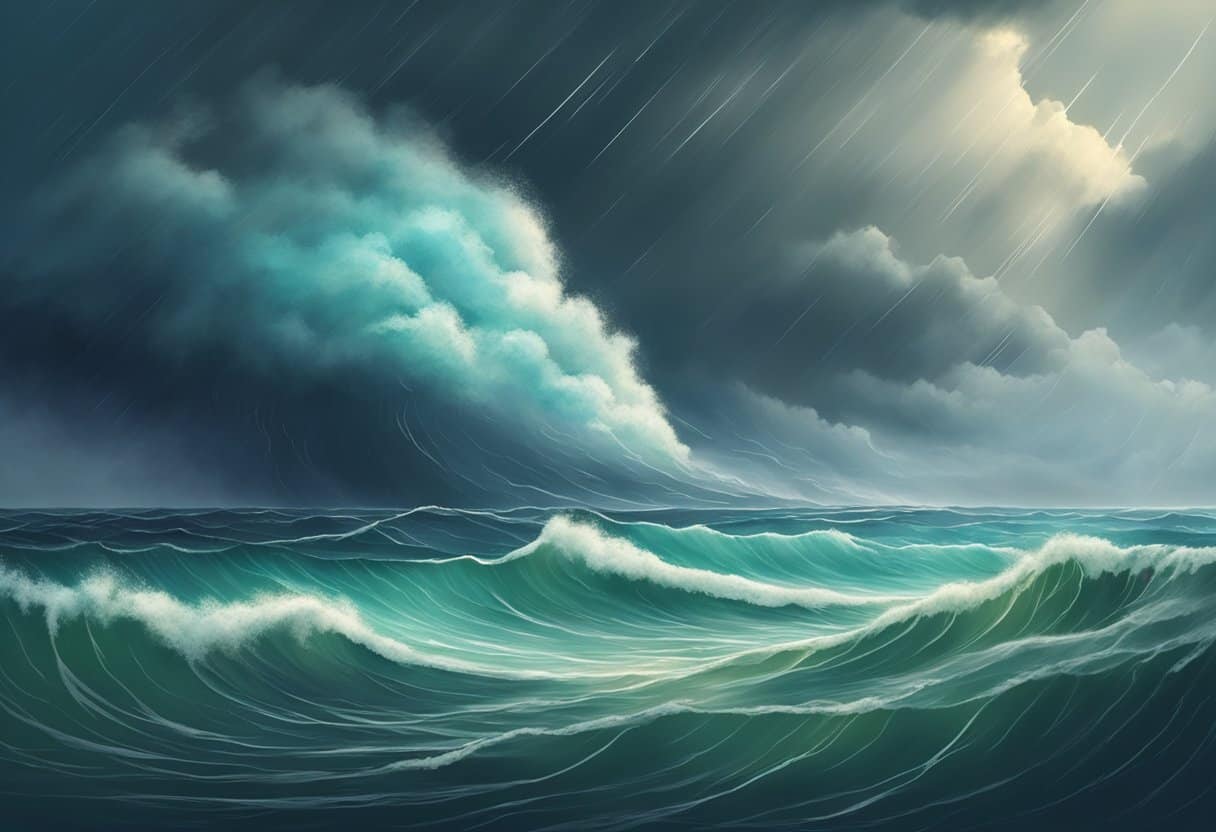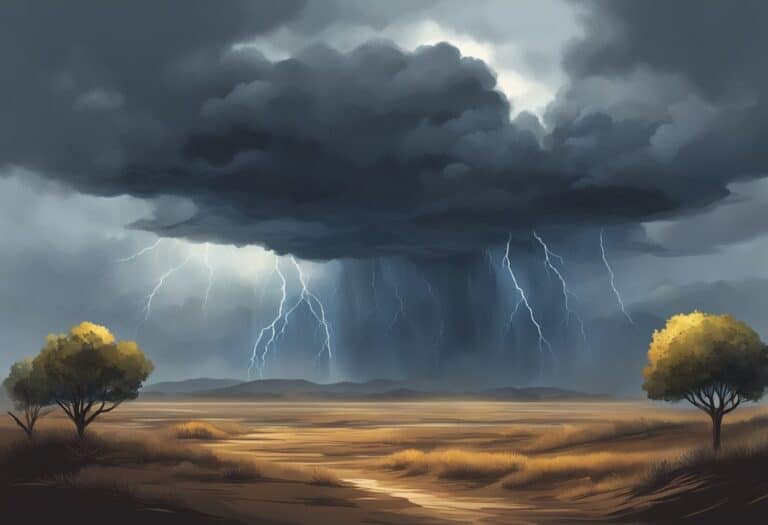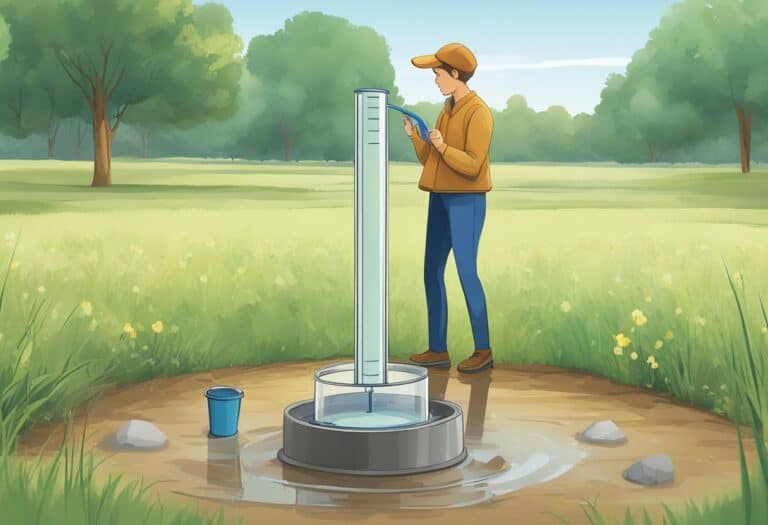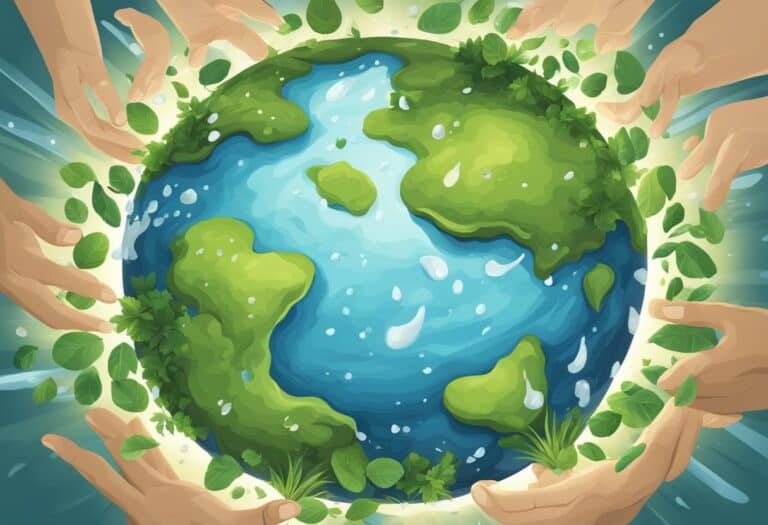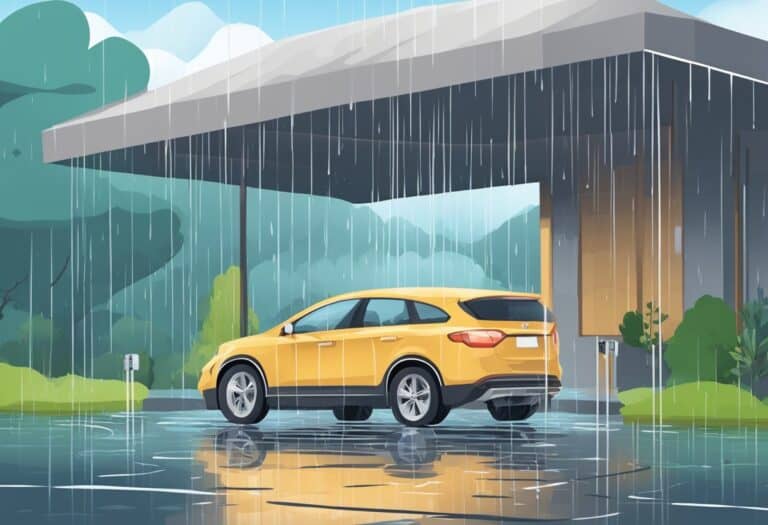A tropical storm is a type of cyclone that forms over tropical or subtropical waters and is characterized by a low-pressure center, thunderstorms, and strong winds circulating around it. When the winds speed reaches 39 to 73 miles per hour, the system is officially classified as a tropical storm. These storms derive their energy from the warm ocean water and typically lose strength when they move over land or into cooler regions.
Understanding tropical storms is crucial as they can evolve into hurricanes or typhoons, depending on their location. The intensity of a tropical storm can cause significant weather impacts, including heavy rain, strong winds, and flooding. It’s important for you to be aware of the risks and prepare accordingly if you live in a region where these storms are prevalent. Modern technology has improved the detection and tracking of tropical storms, allowing for earlier warnings and better preparedness.
Understanding tropical storms, with wind speeds of 39-73 mph, is crucial. They cause heavy rain, flooding, and strong winds, impacting coastal areas most. Be prepared with warnings and evacuation plans if you live in vulnerable regions.
Formation and Characteristics
Understanding how tropical storms form and their main features is crucial. These systems develop from a complex interplay of atmospheric conditions and oceanic processes.
Origins and Development
Tropical storms originate from disturbances such as easterly waves that move across the ocean surface, often near the equator. When the sea surface temperature is sufficiently high, typically above 26.5°C (80°F), and there is low vertical wind shear, these disturbances can form convective clouds. The warm ocean waters provide the heat and moisture necessary for convection. This process releases latent heat, which powers the storm. The Coriolis force, due to Earth’s rotation, imparts a spinning motion, crucial for the development of a tropical cyclone.
Classification and Structure
A tropical cyclone is classified based on wind speed. Before reaching tropical storm status (wind speeds ranging from 39 to 73 mph), it starts as a tropical depression. Once the wind speeds exceed 74 mph, it’s termed a hurricane, typhoon, or cyclone, depending on its location. The Saffir-Simpson Hurricane Wind Scale further categorizes hurricanes into five categories, where a Category 3 or higher is considered a major hurricane due to wind speeds above 111 mph. The structure of a well-formed tropical storm features a clear eyewall, an area of intense weather around the storm’s center, surrounded by convective clouds.
Global Distribution
Tropical cyclones form in several distinct basins around the world, including the Atlantic, Northeast Pacific, Western Pacific, the North Indian Ocean, and regions near Australia and the Southwest Indian Ocean. The Atlantic hurricane season typically peaks from August to October, while the Northeast Pacific season runs from May to November. Factors like monsoon troughs near Africa and India as well as the presence of the Northeast Pacific high, influence where these storms form. The Gulf of Mexico, Caribbean, Central Pacific, and seas near the Philippines often see tropical cyclone activity, which can vary in intensity each year. Temperature fluctuations, notably El Niño events, can amplify storm frequency and intensity in some regions, as demonstrated in the relationship between ENSO and tropical storm formation.
Hazards and Impacts
Tropical storms present a range of hazards that can lead to catastrophic damage and loss of life. Understanding these dangers is crucial as storms make landfall, bringing hurricane-force winds, heavy rainfall, and secondary effects that can persist long after the storm passes.
Storm Surge and Flooding
Storm surge, a dangerous rise in water level due to a tropical storm, poses a significant threat especially in coastal areas like Miami. When the surge coincides with high tide, flooding can become extensive and deadly. In areas of landfall, the combination of surge and heavy rainfall can overwhelm drainage systems, leading to catastrophic flooding, which is often responsible for the greatest loss of life during a tropical storm.
Wind Damage and Related Effects
Tropical storms are characterized by strong winds that can easily exceed hurricane-force intensity. Sustained surface wind speed can damage buildings, snap trees, and turn unsecured objects into dangerous projectiles. Furthermore, the high winds can cause extensive power outages and interrupt public services, compounding the storm’s effects.
Secondary Effects and Long-Term Impact
The aftermath of a tropical storm often includes tornadoes, which add to the variety of damage. Over time, the repeated impact of tropical systems can exacerbate the effects of climate change, leading to a longer-term modification of coastal landscapes and habitats. Loss of life, though most immediate, is just one aspect of a tropical storm’s impact—rebuilding and recovery can extend years into the future, reflecting the storm’s extensive economic and social consequences.
Detection and Tracking

When a tropical storm threatens, advanced detection and tracking systems play a crucial role in forecasting its path and potential impact. These systems help inform you about necessary precautions and preparedness measures to take.
Forecasting and Prediction
You can rely on the World Meteorological Organization along with national forecasters like the National Hurricane Center for accurate predictions of tropical storm movements. These entities use satellite imagery and atmospheric models to predict a storm’s trajectory. The data gathered enables accurate forecasting, which is especially vital along vulnerable regions like the Pacific Coast and the Caribbean Sea. For example, the California coastline heavily monitors storm predictions due to its direct exposure to the Pacific.
In the Southern Hemisphere, organizations such as the Fiji Meteorological Service track tropical storms using similar methods. It’s essential for you to pay attention to updates from these authorities as they can provide advanced warning and advisories in multiple languages, including French and Spanish.
Tropical Storm Warnings and Preparedness
When a tropical storm warning is issued, it’s crucial for you to prepare, especially if you live in areas prone to severe weather conditions like mobile homes or coastal regions. A tropical storm warning means that tropical storm conditions are expected somewhere within the warning area. Such alerts allow you to take actionable steps, such as securing outdoor objects and creating evacuation plans if necessary.
Keep informed through both local news outlets and the National Hurricane Center to stay abreast of the latest advisories. Having a preparedness kit and an evacuation plan in place, especially in regions like the Caribbean Sea where tropical storms are more frequent, can significantly reduce the risks associated with these severe weather events.
Frequently Asked Questions
In this section, you’ll find detailed answers to some of the most common inquiries about tropical storms, helping to clarify differences in terminology and provide insight into the characteristics and impacts of these weather events.
How does a tropical storm differ from a hurricane in terms of wind speed?
A tropical storm has sustained wind speeds ranging from 39 to 73 miles per hour. Once winds reach a sustained speed of 74 miles per hour or higher, the storm is classified as a hurricane.
What are the typical characteristics one can expect during a tropical storm?
During a tropical storm, you can expect heavy rainfall, strong winds, and potential flooding. These conditions can lead to power outages, damage to structures, and hazardous travel conditions.
What is the process of classification for different types of cyclones, including tropical storms?
The process of classification involves using satellite imagery and other data to assess a cyclone’s wind speed and structure. Tropical storms are classified when sustained wind speeds reach between 39 and 73 miles per hour.
What potential risks and impacts do tropical storms pose to affected areas?
Tropical storms can cause extensive property damage, flooding, and mudslides. They can disrupt ecosystems, and create serious travel hazards, and even lead to loss of life in severe cases.
How do meteorologists determine when a storm qualifies as a severe tropical storm?
Meteorologists use data from weather satellites, aircraft reconnaissance, and surface observations to measure wind speeds and storm structure, classifying a storm as severe when it shows intensified wind speeds and more organized storm activity.
Why are some storms classified as tropical depressions instead of tropical storms?
A system is labeled a tropical depression when it exhibits a circular wind flow with maximum sustained winds below 39 miles per hour. Once it exceeds that threshold, it’s classified as a tropical storm.

